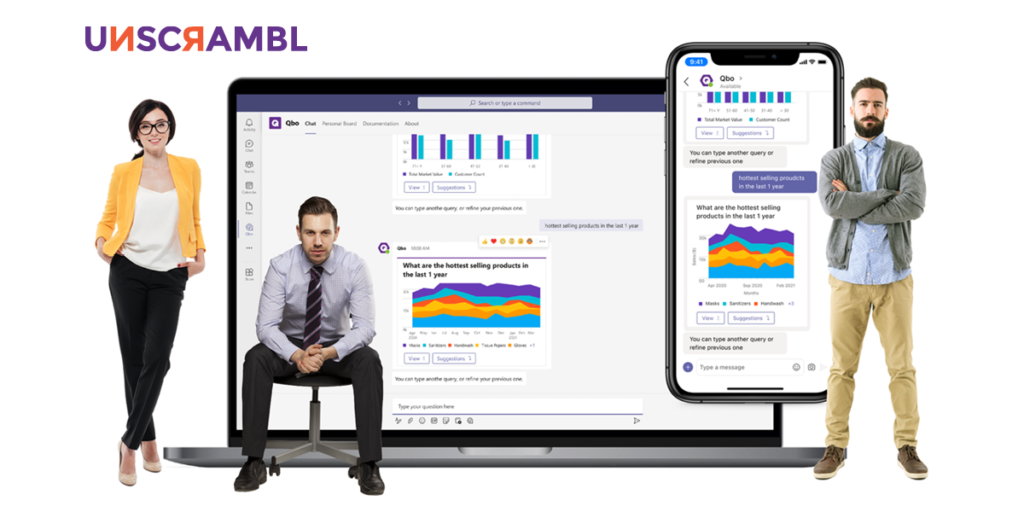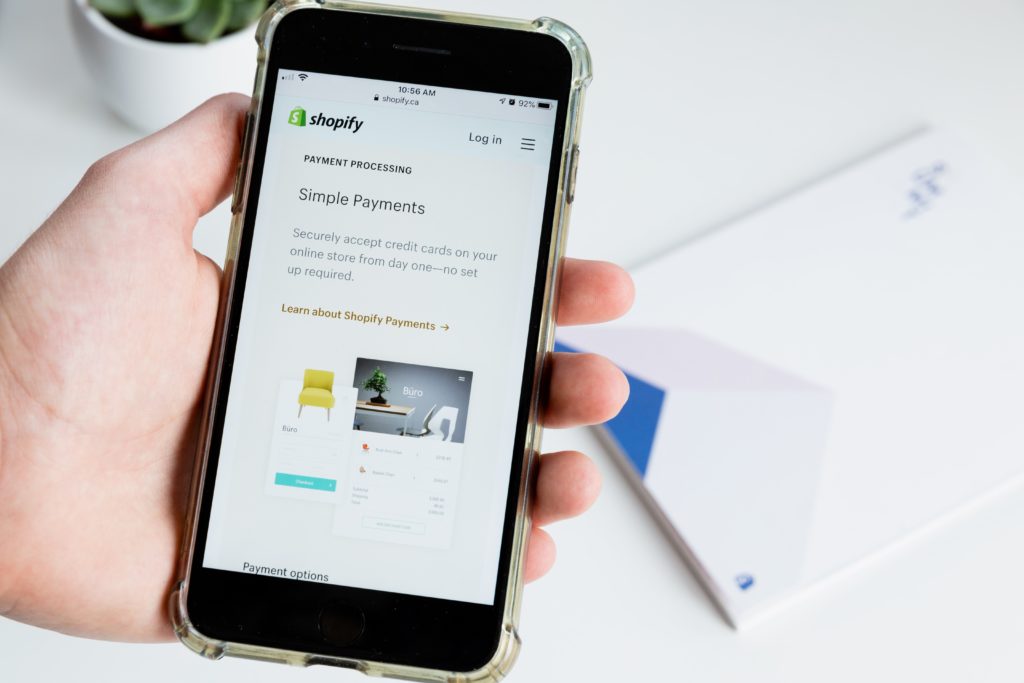 6 Minutes
6 Minutes

6 Inspiring Examples Of Data-Driven Companies (Key Takeaways Included)
From tackling evolving consumer tastes to launching new innovative products, companies are increasingly relying on the power of data to make game-changing decisions.
According to IDC, In 2018, companies spent over $60.7 billion worldwide on big data and analytics software investments and this is expected to continue growing despite the current COVID-19 pandemic environment.
However, effectively using data goes beyond just selecting a robust business intelligence solution – it requires organizations to build an effective data-driven culture.
Brands that dominate today’s business landscape are data-driven companies that effectively utilize valuable insights from their data to guide their decision making.
And it’s no surprise – in fact, companies that are data-driven are 23 times more likely to acquire customers and 19 times more likely to remain profitable!
The Rise Of Data-Driven Companies
A data-driven company is one that has established a framework and culture where data is prized and effectively utilized to make decisions across an organization – from the marketing departments to product development and human resources.
Organizations today are increasingly turning to analyzing their data for insights to optimize their operations and unlock greater opportunities to serve their customers better.
Take McDonald’s for example, we all recognize the brand for their french fries and Big Mac, but very soon, the iconic fast-food brand might also be known for their big data analytics.
In 2019, the brand paid $300 million to acquire Dynamic Yield, a big data company that provides retailers with algorithmically driven decision logic technology.
With nearly 68 million customers being served every day, a majority of this is done through drive-thrus – and with that comes a treasure trove of data to analyze.
With their acquisition, McDonald’s will be using insights from their data to drive mass personalization of menus that will take into consideration not only their customer’s previous purchases but also the weather, time of day, and local events.
This will help to optimize McDonald’s high-volume, low-margin business especially in a fast-food landscape that has been suffering since 2018 and will likely look even bleaker as food prices continue to rise due to the global coronavirus pandemic.

In this article, we will take you through a showcase of amazing companies that are harnessing the power of their data to revolutionize their industries and key lessons to take back and incorporate into your own data-driven evolution.
5 More Data-Driven Companies Utilizing Analytics To Innovate Ahead
1. Netflix – Using Data To Create New Blockbuster Hit Series
When it comes to developing new innovative products and services, it can be disastrous if you rely only on your gut instinct or opinions – even the best brands in the world are not immune to this.
Thankfully with the smart utilization of data (through business intelligence), companies will allow data-driven insight to guide them to make logical decisions with a high probability of success.
Netflix intelligently utilized the power of their data to run predictive analysis to learn what exactly their customers would be receptive and interested to watch.
By analyzing over 30 million ‘plays’ a day as well as over 4 million subscriber ratings and 3 million searches, they were able to make winning bets on developing widely-acclaimed hits such as ‘House of Cards’ and ‘Arrested Development’.
Takeaway:
Be sure to leverage the data of your customers and consumers. From their behavioral data to ratings and comments, all these are treasure troves of data to help you determine if a new product or feature will be well-received.
2. Google – Utilizing People Analytics For A Better Workplace
Employees are the lifeblood of any organization and keeping their morale up is essential for your business to thrive, grow and innovate – especially in a world where remote working is becoming the new norm.
With data & analytics, organizations will be able to understand their workforce better, manage their talent pipeline more effectively as well as retain employees that are performing.
Google’s people analytics teams dug deep into their data and analyzed employee performance reviews and feedback surveys amongst many data sources to better understand how to ‘build a better boss’.
This helped to create a list of data-driven insights into what employees valued and helped to improve the manager quality 75% of their lowest-performing managers.
But that’s not all, Google’s use of analytics extended to making key decisions to enhance employee welfare – such as extending maternity leave to cut their new mother attrition rates in half.
Takeaway:
While data analytics is fantastic at identifying new opportunities to grow your bottom-line, it can also be used to diagnose any HR issues and gain insights into how you can improve your teams.
It’ll help you take care of your people so that they can take care of your business.
3. Coca-Cola – Serving Customers The Ads More Effectively
In 2018, more than $283 billion was spent on digital ads and this figure is predicted to rise to $517 billion by 2023. However, in a study conducted by Rakuten, marketers estimated that they wasted around 26% of their marketing budget from utilizing the wrong strategies or channels.
With data & analytics, marketing teams will be able to effectively serve the right ads to the right audience, allowing brands to maximize their ad campaign ROI.
Take Coca-Cola for example, with over 105 million followers on Facebook and 2.7 million on Instagram, the brand has a treasure trove of data they can analyze – from their brand mentions to even the pictures uploaded by their fans.
Coca-Cola cleverly leverages the power of image recognition technology and data analytics to target users based on the photos they share socially – giving them insights into the individuals drinking their products, where they are from and how (and why) their brand is being mentioned.
The personalized ads served this way enjoyed a 4x greater click-through rate versus other methods of targeted advertising.
Takeaway:
Understanding & identifying the right customers is key in ensuring your marketing campaigns score a hit. Here’s a guide with 6 ways to utilize the power of data analytics for your marketing teams.
4. DBS Bank – Harnessing AI & Analytics To Serve Customers Better
As one of the premier banks in Singapore, DBS bank is no stranger to competition and in an environment of rising fintech competitors, the brand has to innovate ahead.
With over SG$ 4.4 billion invested over the last 4 years into technology, DBS has invested heavily into AI and data analytics to provide their customers with hyper-personalized insights and recommendations to allow customers to make better financial decisions.
This means providing intelligent banking capabilities that include:
- Offering investment proposals on financial products & instruments
- Stock recommendations based on an investor’s portfolio
- Notifications on favorable FX rates
- Unusual transactions notifications
By analyzing their data sources, DBS is seeking to revolutionize the way customers bank and to transform their brand from not just a bank but towards more of a trusted financial advisor.
But that’s not all!
To ensure this evolution is effective and lasting, the bank trained over 16,000 employees in big data and data analytics to truly transform the company into a data-driven organization.
Employees across the bank will be able to use data to address business challenges, identify opportunities and create more intuitive experiences and products for their customers.
Takeaway:
Prioritizing customer experience is paramount today. By analyzing key customer data, you’ll be able to uncover insights into their pain-points and how they are interacting with your platform, allowing you to serve them better.
5. UBER – Providing Faster & More Efficient Ride With Data
When we use UBER to hail a ride, we visualize an abundance of drivers circling around our vicinity and expect to hop into a car within a few minutes.
While we are used to this luxury, making this happen – namely, solving the demand-supply gap, is a big challenge that UBER faces everyday.
Thankfully with predictive analytics, the company is able to analyze historical data and key metrics that include the number of ride requests and trips getting fulfilled in different parts of a city as well as the time and day where this is happening.
This analysis helps UBER to gain insight into areas that have a supply crunch, allowing them to pre-emptively inform drivers to move to areas ahead of time in order to capitalize on the inevitable rise in demand.
Takeaway:
By harnessing the power of your data, companies can effectively use predictive analytics to identify trends and effectively position their business to profit from already existing customer demand.
For example, manufacturers are able to use business intelligence to analyze production demand & trends to optimize their marketing, inventory management, and supply chain as well.

Transform Your Company Into A Data-Driven Organization Today
Making data-driven decisions doesn’t have to be difficult, but it all starts with making the correct mindset shift in your organization.
By becoming a data-driven organization, not only will you start optimizing your processes and make your operations more efficient, you’ll start to allow the data to guide you towards more revenue opportunities.
At Unscrambl, we created Qbo, a business intelligence tool to allow organizations to effectively harness and gain insight into their data. Powered by conversational analytics, you will be able to gain actionable insights by simply asking questions to the data itself, like you would in a normal conversation.
Embark on a free 14-day trial today and start building the culture of data-driven decision making for your company.


